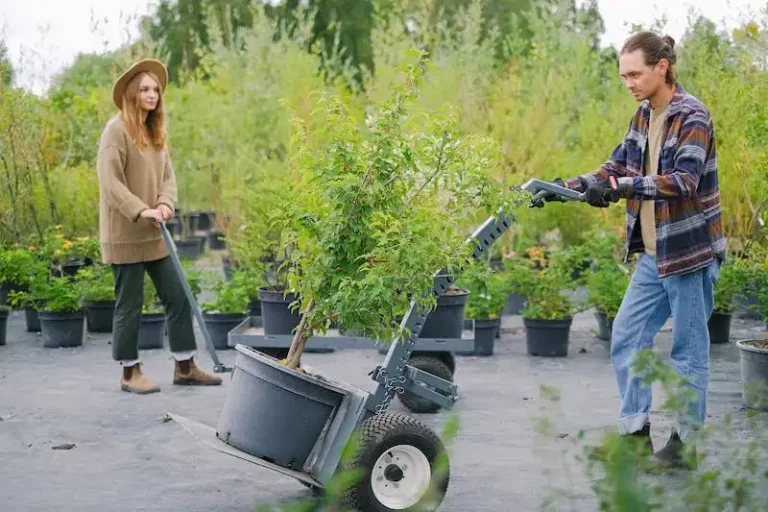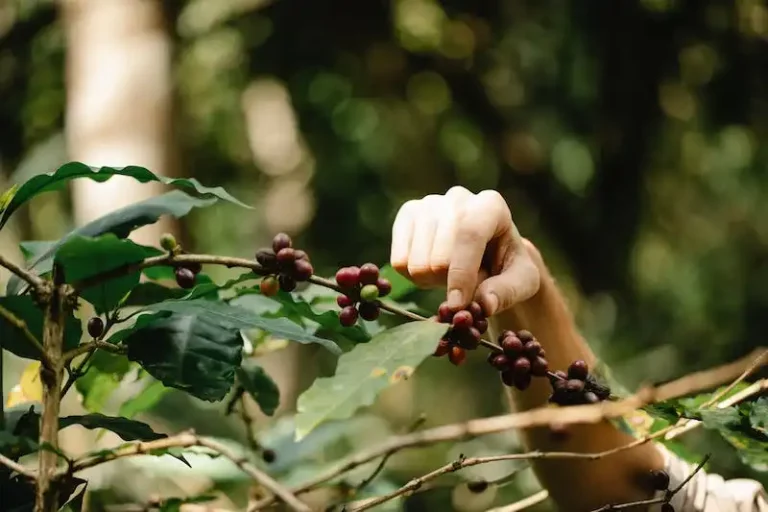When it comes to seed cleaning techniques, there are various methods that can be used depending on the type of seeds you are working with. Whether you have a collection of seeds from your own garden, or you are part of a seed bank, proper seed cleaning is essential to ensure the viability of the seeds and their successful germination.
One technique that is commonly used is sorting the seeds. This involves carefully separating the seeds from any bits of plant material or other debris. By gently shaking the seeds in a tray or on a table, the slight weight difference between the seeds and the debris helps to separate them.
Another technique is proper seed processing. This involves removing the outer layer or hull of the seeds, which is also known as dehulling. By rolling the seeds on a hard surface or using a seed processor, the hulls can be easily removed. This process is especially important for species with hard seeds, such as Bergamot and Americanum.
Once the seeds have been properly cleaned and processed, they can be stored for future use. This is important for seed banks and avid gardeners alike. Storing the seeds in a cool, dry place, such as a properly sealed container, will help to extend their viability for years to come.
In conclusion, seed cleaning techniques are essential for maintaining the quality and viability of seeds. Whether you are an amateur gardener or part of a seed bank, proper cleaning and processing of seeds is necessary. By following these techniques, you can ensure that your seeds are ready for planting and will give you a bountiful harvest of plants and flowers.
SEED COLLECTION 2 Proper Cleaning and Storage
After the seed processing and opening, it is important to properly clean and store the seeds to ensure their viability for future planting. Here is a step-by-step guide on how to do it:
1. Weigh the seeds: Use a weighing scale to determine the weight of the seeds. This will help in determining the amount of seed you have on hand.
2. Separate the seeds: For larger seeds, such as pumpkin or Chinese lettuce seeds, you can easily separate them by hand. However, for smaller seeds like Solanum quitoense or Epilobium angustifolium, a knife or similar tool may be required.
3. Open the capsules: If the seeds are stored in protective capsules or pods, open them carefully using a knife or your fingers to release the seeds.
4. Clean the seeds: Give the seeds a quick rinse using water to remove any dirt or debris. Be gentle to avoid damaging the seeds.
5. Dry the seeds: After rinsing, spread the seeds on trays or a clean surface to dry. Ensure that they are in a well-ventilated area and protected from direct sunlight.
6. Store the seeds: Once the seeds are completely dry, store them in airtight containers or packets. You can also use small envelopes or sealable bags. Label each packet with the seed variety and the date of collection.
7. Find a suitable storage place: Choose a cool, dark, and dry location to store your seeds. Avoid areas with fluctuating temperatures or high humidity, as this can reduce seed viability.
Proper cleaning and storage techniques are crucial for maintaining the quality and viability of your seed collection. Following these steps will ensure that you have viable seeds for future planting.
Seed Cleaning Techniques
When it comes to seed cleaning, there are several techniques you can use to ensure the best possible results. Here are a few methods you can try:
1. Vibration: One quick and effective way to separate the seeds from other debris is by using a vibrating platform or sieve. This method helps to shake off any larvae or unwanted particles that may be present.
2. Cut and scoop: For larger seeds, you can cut open each fruit or seed pod and scoop out the seeds. This technique is particularly useful for plants like bergamot, sambucus, and solanum citriodora.
3. Whole fruit extraction: Some fruits, like the Rosa spp., have seeds that are easily removed whole from the fruit. Simply squeeze the fruit to release the seeds.
4. Blowing technique: This technique is suitable for seeds that are lightweight and have an opening, such as lactuca, tecoma, and pepperleaf. By blowing on the seeds, you can easily separate them from any debris.
5. Freeze and thaw: For seeds that are difficult to remove from their shells, freezing them can help. Place the seeds in a freezer for a few hours, then thaw them at room temperature. The freezing and thawing process often causes the shell to crack, making it easier to remove the seeds.
6. Bulk seed cleaning: If you have a large quantity of seeds that need cleaning, you can use a bulk seed cleaning machine. These machines remove debris and separate the seeds in a more efficient manner.
Remember, proper seed cleaning is essential for maintaining the quality and viability of your seeds. By using these techniques, you can ensure that you are collecting clean and healthy seeds for future plantings. Happy seed cleaning!
Techniques specific to a genus
When it comes to seed cleaning techniques specific to a genus, each plant may require different methods to ensure successful seed collection and storage. Here are some techniques that can be used for specific genuses:
- Pogostemon: Harvest the seeds from the plant and separate any pulp or larger particles. Store the clean seeds in a packet in a cool and dry place.
- Lactuca: Cut the flower heads and shake them over a bowl or tray to separate the seeds. Use sieves of different sizes to obtain finer or coarser seeds.
- Pumpkin: Remove the seeds from the fruit and wash off any pulp. Roast the seeds for a quick and easy cleaning process.
- Elderberry: Collect the ripe berries and freeze them. Once frozen, gently separate the seeds from the pulp.
- Chinese Rose: Harvest the rose hips and remove the seeds. Clean them by rolling them in a towel or shaking them in a closed container.
- Wormwood: Shake the dried flower heads over a bowl or tray to separate the seeds from the fine particles.
- Tronadora: Remove the seeds from the dried flower heads and store them in a sealed packet.
- Sambucus: Collect the ripe berries and remove the seeds from the pulp using a sieve. Store the clean seeds in a packet.
- Rosa auritum: Collect the rose hips and remove the seeds. Clean them by shaking them over a bowl or tray to separate any particles.
- Chinese Tree Stans: Harvest the seed pods and remove the seeds. Clean them by shaking them in a closed container or rolling them in a towel.
- David Bach: Store the seeds in bulk and use sieves of different sizes to separate the finer particles from the larger ones.
Remember, each genus may have its own specific seed cleaning techniques, so it’s important to research and follow the proper methods for each plant. Taking care during the cleaning process will ensure that you don’t leave any unwanted matter in the seeds, allowing for successful storage and future planting.
How to Clean Pumpkin Seeds: A Step-By-Step Guide
Pumpkin seeds are a delicious and nutritious snack, but before you can enjoy them, you’ll need to clean them first. In this guide, we’ll walk you through the steps to clean your pumpkin seeds so that you can enjoy them without any hassle.
Step 1: Harvest the seeds
Begin by harvesting the pumpkin seeds from the pumpkin. Cut the pumpkin open and scoop out the pulp, being careful not to damage the seeds. Place the seeds in a bowl or container.
Step 2: Separate the seeds from the pulp
To separate the seeds from the pulp, fill a container with water and add a pinch of salt. Mix the water gently to help loosen the pulp from the seeds. The seeds will sink to the bottom, while the pulp will float to the top. Use your hands or a slotted spoon to remove the pumpkin seeds from the water, leaving the pulp behind.
Step 3: Rinse the seeds
Once you have separated the seeds from the pulp, give them a thorough rinse under running water. This will help remove any remaining pulp or residue from the seeds.
Step 4: Dry the seeds
After rinsing, spread the seeds out on a clean towel or paper towel in a single layer. Allow them to air dry for at least 24 hours. Make sure the seeds are completely dry before proceeding to the next step, as moist seeds can become moldy.
Step 5: Roast the seeds
Roasting the pumpkin seeds helps enhance their flavor and texture. Preheat your oven to 300°F (150°C). Place the dry pumpkin seeds on a baking sheet in a single layer. Drizzle with olive oil and sprinkle with salt or other seasonings of your choice, such as pepper, paprika, or cinnamon. Toss the seeds to coat them evenly. Bake for about 30 minutes or until the seeds turn golden brown, stirring occasionally to ensure even roasting.
Note: If you prefer raw pumpkin seeds, you can skip this step and simply enjoy them as is.
Once the pumpkin seeds are roasted, allow them to cool completely before storing in an airtight container. You can then enjoy the seeds as a snack, add them to salads or trail mixes, or use them as a topping for soups and stews.
By following these step-by-step instructions, you can clean and prepare your pumpkin seeds for consumption in no time. Enjoy!

